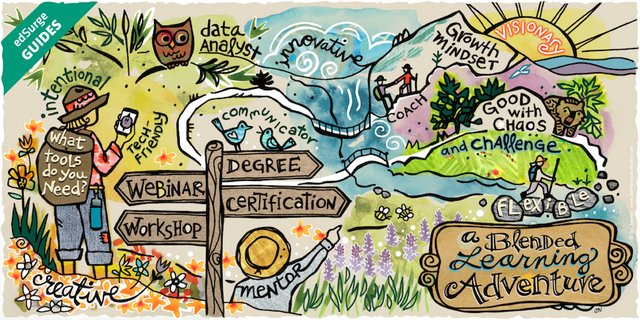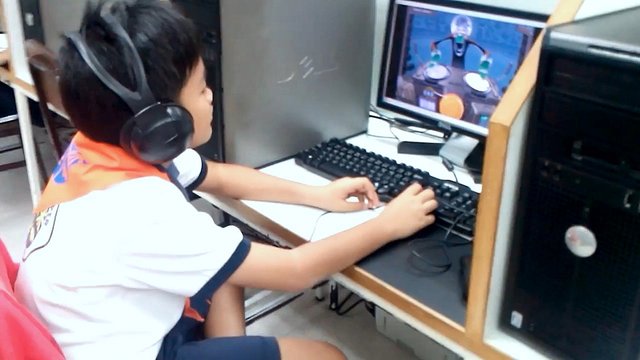BLENDED LEARNING SERIES PART #8: Lab Rotation Model (Not Your Regular Computer Laboratory Time)
Just a bit different from Station Rotation model, Lab Rotation model allows students to move in and out of the classroom to a computer lab. As traditional as it may sound, in BL, lab rotation does not simply allow a change of learning environment for the students but the data from the content in the lab "informs" the instruction in the classroom.
Lab Rotation Model
Within a given course or subject, students rotate at fixed points in time (that is, on a fixed schedule or at the teacher’s discretion) between a classroom and a computer lab, in which students learn predominantly online. The classroom is generally reserved for other learning activities.
Before Going Any Further
If this is the first blog post you read in this series, I’d like reiterate what is Blended Learning before you read any further. From Wikipedia:
“Blended learning is a formal education program in which a student learns at least in part through delivery of content and instruction via digital and online media with some element of student control over time, place, path, or pace.”

PHOTO CREDIT: EDSURGE.COM
This model augments Station and Flipped Classroom models where the latter models have come short.
As with Station Rotation model, this model may replace the online lab in the classroom with a bigger and more robust separate computer lab which offers more functionalities and capabilities as compared with the online lab in the classroom
In the case of the Flipped Classroom model, this model supports students who have no access to computers at home or no access to the internet. In this case, students are still able to watch and learn from video tutorials the teacher has prepared.
Besides my own lesson plan for each class, teachers may request for a special session where they could integrate their lesson topics in math, science, language, or other subjects using online or offline application.
Highly specialized applications like Math or English learning systems are used in this setup. One good example of this application is SciLearn's Fast ForWord. I will provide more information of this application as the last part of this blog post.
The use of computer/online learning lab may be done as fixed schedule or at the teacher’s discretion.
Fixed Schedule
There are many ways a teacher can implement the Lab Rotation model. In fact you may have already been doing this for a while now.
Fixed Days in a Week
You may design your implementation so that there is a Lab Rotation at least once a week. This means that your class goes to the computer lab on a fixed schedule throughout the school year. I taught primary and elementary computer classes and each class/section is allocated one day per week for their computer class. Whenever time and resources allow, teacher may choose to bring their class to the computer lab more than once in a week.
In the case of Fast Forword, an application for language and reading development prescribes the following schedule to get more out of the software:
- Three days per week for 30 or 50 minutes.
- Five days per week for 30, 40, 50, or 90 minutes.
Fixed Time Within a Class Period
As mentioned above, instead of having your online time in the same classroom in the case of Station Rotation Model, you take your class to a separate computer lab where a highly specialized application is installed that may not be available in your own classroom. The time required depends on how you setup your Station Rotation model.
Since there will be movement from classroom to the computer lab, there should be alloted time for the travel from and to the computer lab. This means that some of the stations in the Station Rotation model may have to be sacrificed to make room for the Lab Rotation model. However, this may not happen everyday and the teacher should find a way to balance the time to benefit the full potential of this model.
Teacher’s Discretion
Going to the lab may also be decided by the teacher as needs-based learning. However, the plan to use the laboratory must be part of the lesson plan and the scheduling of the computer lab has to be done ahead of time.
Fast ForWord Language - Online Application
A brief video clip of what Fast ForWord lab looks like. I took this video from my previous school. The same students were my students in computer class.
Fast ForWord Language (FFW), now version 2, is a hybrid application that utilizes both offline and online resources. FFW aids “elementary students toward grade level reading skills, with a focus on listening accuracy, phonological awareness, and language structures.”

PHOTO CREDIT: http://www.ncslp.com/
Fast ForWord Objectives
FFW develops not only the reading and language skills, but also the cognitive skills, memory, attention, processing, and sequencing. FFW sets students on a differentiated learning path based on age and assessment results. These results, as I have explained above is brought back to the classroom and “inform” the teacher on how to intervene with student learning based on these results.

Key Areas of FFW
- Improves memory by having the student hold a statement or question in working memory while retrieving picture-concept associations from long-term memory.
- Improves attention by developing the ability to focus on multiple tasks and ignore distractions.
- Strengthens auditory and linguistic processing rates so that students can distinguish sounds quickly enough to discriminate individual phonemes and understand words and sentences.
- Develops sequencing skills through exercises that require the use of a logical word order to comprehend simple and complex instructions and organize a response that follows the specified sequence of actions.
Source: SciLearn.com